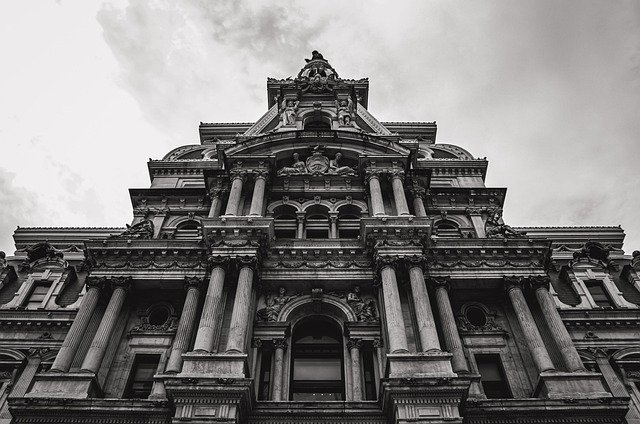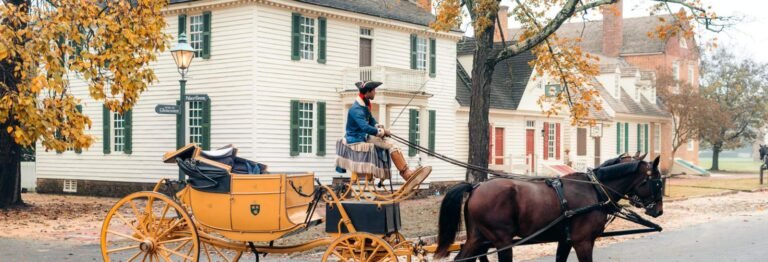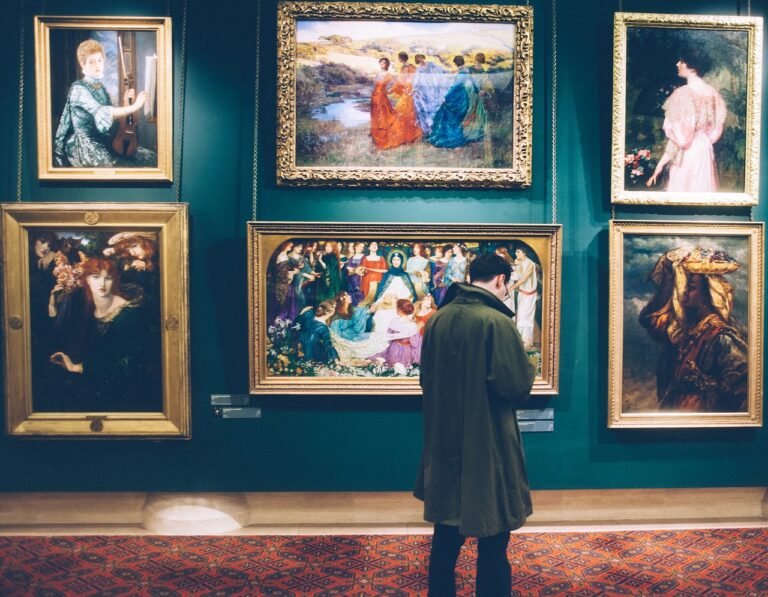Exploring the Hidden History: Lesser-Known Historical Landmarks in Philadelphia
Disclosure: This post contains affiliate links. If you purchase through these links, I may earn a small commission at no additional cost to you. This helps support the blog and allows me to continue sharing travel guides like this one. I only recommend services and products I use and trust.
Walking through Philadelphia’s cobblestone streets last spring, I stumbled upon a narrow alley that looked like it belonged in colonial times. Most tourists rush past Elfreth’s Alley on their way to Independence Hall, but I discovered it holds more authentic American history than many of the crowded attractions nearby. That moment sparked my fascination with Philadelphia’s hidden historical gems – the places where real stories unfold without the tour bus crowds.
Philadelphia isn’t just about the Liberty Bell and Independence Hall. This city holds secrets in every neighborhood, from colonial architecture tucked away in quiet corners to underground railroad sites that shaped American freedom. The best part? You can explore these lesser-known historical landmarks in Philadelphia in a single day, creating memories that feel personal and meaningful.
After months of exploring every corner of this historic city, I’ve put together this guide to help you discover Philadelphia’s authentic side. These sites tell stories that textbooks often skip – tales of everyday heroes, forgotten communities, and moments that quietly changed America.
Why Visit Lesser-Known Historical Landmarks in Philadelphia?
Table of Contents
ToggleDuring my first visit to Betsy Ross House, I waited in line for forty-five minutes surrounded by chattering tour groups. The experience felt rushed and impersonal. Compare that to my visit to Mother Bethel A.M.E. Church, where I spent an hour talking with a volunteer who shared stories passed down through generations. The difference was remarkable.
Hidden historical sites offer something the major attractions can’t: intimacy with history. You’ll find yourself alone with centuries-old artifacts, able to take photos without crowds, and often speaking directly with passionate locals who know stories you won’t find in guidebooks.
These off-the-beaten-path Philadelphia attractions also tend to be budget-friendly. Many offer free admission or suggested donations, making them perfect for travelers watching their expenses. Plus, you’re supporting smaller historical preservation efforts that need visitor support to continue their work.
Planning Your Day: Essential Tips for Visiting Philadelphia's Hidden Historical Sites
Best Time to Visit
I’ve learned the hard way that timing matters when exploring Philadelphia historical tours. Tuesday through Thursday mornings offer the best experience – most sites are open, volunteers are fresh and talkative, and you’ll have places almost to yourself.
Avoid Mondays when many smaller historic houses in Philadelphia close for maintenance. Weekends bring more visitors and special events and demonstrations that add value to your visit. Spring and fall provide the most comfortable weather for walking between sites, though winter visits to indoor locations can be magical with fewer crowds.
Transportation Options
Philadelphia’s historic district walking tours cover most of these sites within a reasonable distance. I typically start in Old City and work my way northwest, covering about three miles total. SEPTA’s bus system connects the farther locations like Bartram’s Garden and Stenton Mansion.
For those preferring not to walk, rideshare apps work well between distant sites. I’ve found that grouping locations by neighborhood makes the most sense – plan Old City sites together, then Germantown locations, rather than zigzagging across the city.
Where to Stay Near Philadelphia’s Historical District
Location makes all the difference when exploring colonial Philadelphia sites. I recommend staying within walking distance of Independence Hall to maximize your time at historical sites rather than in transit.
Find the perfect hotel near Philadelphia’s historic sites (Here) – look for accommodations in Old City, Society Hill, or Center City for easy access to most locations.
Compare hotel prices and find deals (Here) to ensure you’re getting the best rate for your Philadelphia history trip.
Check package deals that combine hotels with attraction tickets for additional savings.
10 Lesser-Known Historical Landmarks in Philadelphia You Must Visit
1. Elfreth’s Alley Museum: America’s Oldest Residential Street
Standing on Elfreth’s Alley feels like stepping through a time portal. This narrow cobblestone street, dating to 1702, housed working-class families for over 300 years. Unlike reconstructed colonial settlements, these 32 houses remain largely unchanged since the 18th century.
I spent a fascinating morning here talking with a museum volunteer whose family lived on the alley in the 1800s. She pointed out details I would have missed – the insurance plaques on building fronts, the varying door heights that reflected different construction periods, and the tiny museum house that shows how families lived in cramped quarters.
The Elfreth’s Alley Museum charges a modest admission fee, but it’s worth every penny for the authentic experience. During December, the alley hosts candlelight tours that transport visitors completely into colonial times.
Book your Elfreth’s Alley experience (Here) for skip-the-line access and guided commentary.

2. Mother Bethel A.M.E. Church: Birthplace of the African Methodist Episcopal Church
This unassuming building holds enormous significance in African American history in Philadelphia. Founded in 1794 by Richard Allen, a former enslaved person, Mother Bethel became the mother church of the A.M.E. denomination and a crucial Underground Railroad station.
During my visit, the church historian shared stories that brought tears to my eyes – tales of families reunited, freedom seekers finding sanctuary, and a community that built something beautiful from struggle. The original church building sits beneath the current structure, accessible through guided tours that reveal hidden spaces where people hid.
The church welcomes visitors for free, though donations support their ongoing historical preservation work. Sunday services offer a chance to experience living history, as the congregation continues traditions started over two centuries ago.
Discover more African American heritage sites for comprehensive Philadelphia Freedom Trail experiences.
3. The Powel House: Elite Colonial Living
Samuel Powel served as Philadelphia’s last colonial mayor and first post-independence mayor, making his Georgian architecture mansion a witness to America’s birth. Walking through rooms where George Washington and John Adams dined feels surreal.
What struck me most during my visit was the contrast between upstairs and downstairs – the elaborate entertaining spaces versus the cramped servant quarters. The house tells a complete story of colonial Philadelphia, including the uncomfortable truths about wealth built on enslaved labor.
The guided tours run hourly and include access to the beautiful colonial gardens that few visitors see. The docents share gossip and personal details about the Powel family that make these historical figures feel human.
Purchase tickets in advance to guarantee your spot, especially during peak Philadelphia tourism seasons.

4. Gloria Dei (Old Swedes’) Church: Pennsylvania’s Oldest Church
This Swedish Lutheran church, built in 1700, predates most of Philadelphia’s famous sites. The Swedish colonial influence creates a unique architectural style you won’t see elsewhere in the city. Inside, the original pews and pulpit create an atmosphere of genuine reverence.
I attended a special concert here one evening, and the acoustics in the old building were incredible. The church still holds regular services, maintaining an unbroken tradition of worship spanning over three centuries. The small cemetery contains graves from the early 1700s, with Swedish inscriptions weathered but still readable.
Admission is free, though they appreciate donations for building maintenance. The church volunteers are incredibly knowledgeable about both Swedish immigration and early Philadelphia religious history.
5. The Physick House: Federal-Style Medical History
Dr. Philip Syng Physick, known as the “Father of American Surgery,” lived in this beautiful Federal architecture townhouse. The building itself represents the evolution from colonial to early American design, with elegant proportions and period furnishings.
During my tour, I learned about 18th-century medical practices that were both innovative and terrifying. Dr. Physick performed the first cataract extraction in America and pioneered several surgical techniques. The house contains original medical instruments that show how far medicine has advanced.
The small size means tours are intimate, usually fewer than ten people. The guides encourage questions and share fascinating details about both medical history and daily life in early 1800s Philadelphia.
6. Stenton Mansion: Germantown’s Colonial Estate
This Georgian mansion, built in 1730, served as a country estate for wealthy Philadelphia merchant James Logan. Located in Germantown, it offers insight into how elite families lived outside the city center. The house played a role in the Revolutionary War when British generals used it as headquarters.
I was amazed by the original colonial furnishings and the extensive archives that document three centuries of Philadelphia history. The mansion sits on grounds that once encompassed hundreds of acres, and walking the remaining property gives a sense of the scale of colonial wealth.
Stenton offers special programs throughout the year, including colonial cooking demonstrations and 18th-century craft workshops that provide hands-on historical experiences. The house also hosts weddings and private events, which helps fund its preservation.
Related Blog Posts of Interest
- Cultural Photography in Boston: Insider Tips & 10 Most Photogenic Locations
- America’s West Coast Travel Guide: 10 Unforgettable Places You Need to See
- Top 15 Museums in American For Families: Your Ultimate Cultural Tour
- Top 7 Historical Landmarks of the USA – Essential to Visit – 2025
- Top 7 Quirky Food Museums in the U.S. You Didn’t Know Existed
7. Bartram’s Garden: America’s Oldest Botanical Garden
John Bartram created America’s first botanical garden here in 1728, collecting plants from across the continent for scientific study. This National Historic Landmark combines natural beauty with significant American science history. Walking the trails, you’ll see descendants of trees Bartram planted nearly 300 years ago.
My favorite visit was during spring when historic varieties of flowers bloom throughout the gardens. The Bartram House contains original scientific instruments and specimens, showing how early Americans studied the natural world. The property also includes a working farm that demonstrates colonial agriculture techniques.
The garden offers free admission to the grounds, with nominal fees for house tours. Their educational programs attract families looking for educational Philadelphia attractions that combine learning with outdoor exploration.
Find discounted garden activities for special workshops and seasonal events.

8. Grumblethorpe: Germantown’s Historic Gem
Built in 1744, this Pennsylvania German stone house represents a different cultural influence in Philadelphia’s development. The Wister family lived here for over 160 years, creating a time capsule of changing American life. During the Battle of Germantown, British soldiers occupied the house, and bullet holes still mark the walls.
The house contains a remarkable collection of colonial artifacts accumulated by generations of the same family. I spent hours examining everyday objects – children’s toys, kitchen implements, clothing – that tell intimate stories about domestic life in early America.
Grumblethorpe offers group tours that can be arranged in advance, making it perfect for history enthusiasts who want detailed exploration. The knowledgeable guides share family stories passed down through oral tradition.
9. The Wagner Free Institute of Science: Victorian-Era Natural History
This extraordinary Victorian museum remains virtually unchanged since 1865, creating an authentic 19th-century scientific experience. The specimens are displayed exactly as they were 150 years ago, in beautiful wooden cases with handwritten labels.
Walking through feels like discovering a cabinet of curiosities from another era. The collection includes fossils, minerals, mounted animals, and botanical specimens that Victorian scientists used for education and research. It’s one of the few places where you can see how 19th-century Americans understood the natural world.
Admission is completely free, making it one of Philadelphia’s best budget-friendly attractions. The institute still offers educational programs, continuing its mission of public science education.
10. Historic Rittenhouse Town: America’s First Paper Mill
This industrial heritage site tells the story of America’s first paper mill, established in 1690. The Rittenhouse family’s innovations made possible the printing of books, newspapers, and eventually the Declaration of Independence. The restored buildings show the entire papermaking process using colonial technology.
During special demonstration days, volunteers show how paper was made by hand, using techniques unchanged for centuries. I tried making paper myself – it’s much harder than it looks! The site also includes the family homestead and other buildings that show how early American industry developed.
The site offers free admission and hosts living history events throughout the year. These events provide some of the most authentic colonial Philadelphia experiences available anywhere in the city.
Sample One-Day Itinerary for Philadelphia's Lesser-Known Historical Landmarks
Morning Route (9 AM – 12 PM)
Start your Philadelphia history day trip early at Elfreth’s Alley Museum when crowds are lightest. Spend an hour exploring the narrow street and museum house, then walk five minutes to Mother Bethel A.M.E. Church. The contrast between these sites – one showing colonial working-class life, the other highlighting African American religious history – sets the tone for discovering diverse Philadelphia stories.
End your morning at Gloria Dei Church, where you can sit quietly in the oldest church building in Pennsylvania. The walk between these three sites covers less than a mile through Old City Philadelphia.
Use Uber or Lyft for quick transportation between distant sites if walking becomes tiring.
Afternoon Route (1 PM – 5 PM)
After lunch in Old City, visit the Powel House to see how Philadelphia’s elite lived during the Revolutionary War era. The guided tour takes about 45 minutes, leaving time to walk to the Physick House for a fascinating look at early American medicine.
End your afternoon at Bartram’s Garden, where you can relax among historic plants while reflecting on the day’s discoveries. The garden provides a peaceful conclusion to your historical exploration, with beautiful river views and plenty of space to decompress.
Extended Day Options
History enthusiasts might add Wagner Free Institute or Historic Rittenhouse Town for a fuller day. Both offer unique perspectives on Philadelphia’s heritage that complement the other sites well.
For dinner, I recommend City Tavern for colonial dining atmosphere, or make reservations through OpenTable at restaurants near your hotel.
Insider Tips for Visiting Philadelphia's Hidden Historical Gems
Photography and Documentation
These lesser-known Philadelphia sites offer incredible photography opportunities without crowds blocking your shots. Early morning light creates beautiful effects on colonial architecture, especially along Elfreth’s Alley and at Stenton Mansion.
Always ask permission before photographing inside historic houses, as some have restrictions on flash photography to protect artifacts. Many sites encourage social media sharing and can suggest the best angles for photos.
Combining with Food Experiences
Philadelphia’s culinary history connects closely with these historical sites. I love pairing visits to colonial houses with meals at historic Philadelphia restaurants that serve period-inspired dishes.
Book food tours that include historical context for a complete sensory experience of Philadelphia’s past.
Weather Considerations
Most of these sites include both indoor and outdoor elements, making them suitable for various weather conditions. However, I recommend checking individual site schedules, as some historic houses have limited winter hours.
Comfortable walking shoes are essential, as many sites have uneven floors, stairs, and outdoor paths that can be challenging in poor weather.
Budget-Friendly Ways to Explore Lesser-Known Historical Landmarks in Philadelphia
Free Admission Sites
Several sites offer completely free admission: Gloria Dei Church, Wagner Free Institute, and Bartram’s Garden grounds. These alone provide a full day of historical exploration without spending money on entrance fees.
Many paid sites offer suggested donation options rather than fixed admission fees, making them accessible for budget-conscious travelers. Student and senior discounts are widely available with proper identification.
Discount Opportunities
Philadelphia historical societies often offer reciprocal memberships that provide discounts at multiple sites. If you plan to visit several historic houses Philadelphia, these memberships can save significant money.
Look for combination tickets and city passes that include both famous and lesser-known attractions for better overall value.
Combination Tickets and Packages
Offers – combo tickets that combine several historical sites with transportation, creating convenient packages for visitors.
Some sites offer group rates that make sense for families or friends traveling together. Call ahead to ask about group discounts, especially for weekday visits.
Making the Most of Your Historical Landmark Adventure
Educational Preparation
Reading about Philadelphia’s colonial history before your visit enhances the experience significantly. I recommend “Philadelphia: A Quick History” by John Francis Marion for accessible background information.
Find recommended Philadelphia history books for deeper preparation and follow-up reading after your visit.
Connecting with Local History
Many sites offer volunteer opportunities for people interested in historical preservation. Volunteering provides behind-the-scenes access and deeper relationships with these special places.
Local historical societies often host lectures, events, and special tours that provide continuing education about Philadelphia’s past. Joining their mailing lists keeps you informed about special opportunities.
Frequently Asked Questions
How long does it take to visit all these sites? A full day covers 4-5 sites comfortably, with time for meals and travel between locations. History enthusiasts might prefer spreading visits across two days for more thorough exploration.
Are these sites accessible for visitors with mobility challenges? Accessibility varies significantly among historic buildings Philadelphia. Most sites built before 1990 have limited accessibility features. Call ahead to discuss specific needs and alternative access options.
Can children enjoy these historical sites? Many sites offer family-friendly Philadelphia history programs designed for children. Bartram’s Garden and Historic Rittenhouse Town particularly appeal to kids with hands-on activities and outdoor space.
Do I need advance reservations? Most sites accept walk-in visitors, but reservations guarantee availability and sometimes provide discounts. Popular sites like the Powel House benefit from advance booking, especially during peak Philadelphia tourist season.
Conclusion
Philadelphia’s lesser-known historical landmarks offer something precious: authentic connections with America’s past. Unlike crowded famous attractions, these sites let you experience history at your own pace, with space to reflect and absorb stories that shaped our nation.
My explorations of these hidden Philadelphia gems have changed how I understand American history. These weren’t just important events – they were real people living, working, struggling, and succeeding in ways that still resonate today. From the Swedish immigrants at Gloria Dei to the entrepreneurs at Rittenhouse Town, every site reveals different threads in Philadelphia’s rich historical tapestry.
Whether you’re a Philadelphia first-time visitor or a longtime resident, these lesser-known historical landmarks in Philadelphia reward curiosity with discovery. Pack comfortable shoes, bring your camera, and prepare to see Philadelphia through new eyes. The stories waiting in these quiet corners will surprise and inspire you.
Book your Philadelphia accommodation now and start planning your own historical adventure through America’s most historic city.







